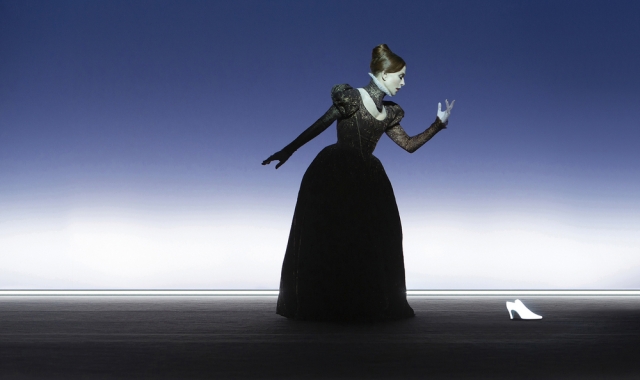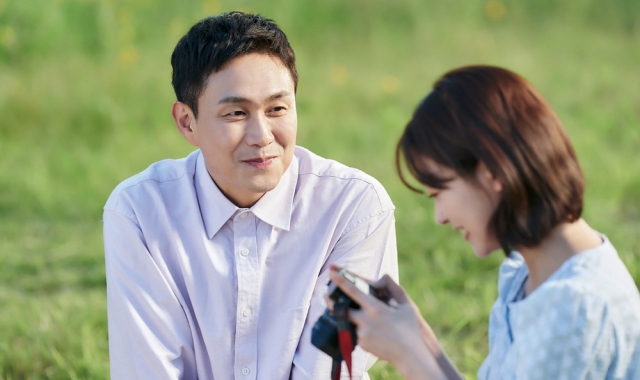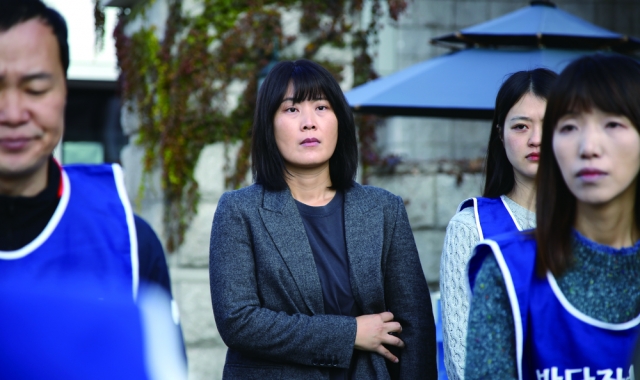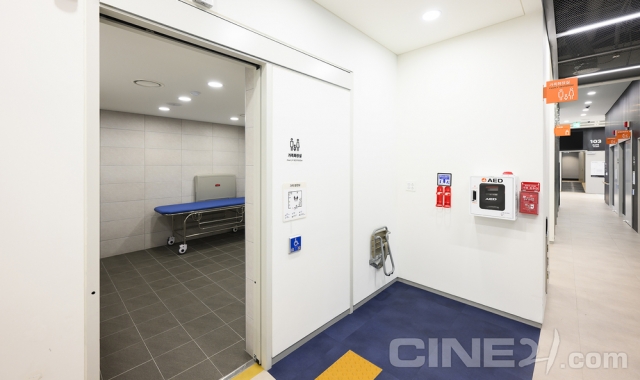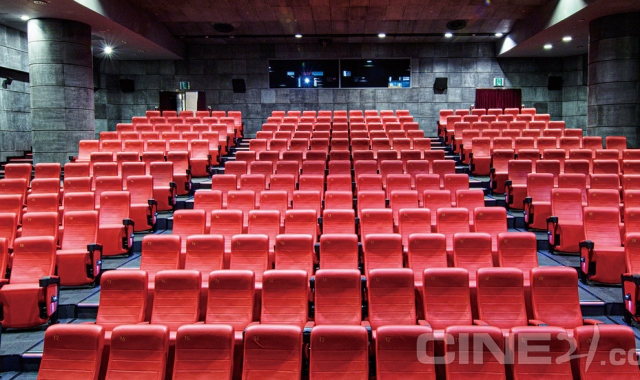
올해 토론토국제영화제는 토머스 클레이 감독에게 <로버트 카마이클의 엑스터시>를 상영하지 않겠다고 통보했다. 프로그래머가 서신에 적어놓은 이유는 다음과 같았다. “만약 이 영화를 상영한다면 토론토 시민들이 영화제측을 절대로 용서하지 않을 것입니다”. 하지만 부산 시민들은 부산국제영화제의 프로그래머들을 너그럽게 용서할 것이다. 살륙을 행하는 소년들의 이야기 <로버트 카마이클...>는 올해 부산영화제의 가장 소름끼치는 영화적 경험이지만, 인간의 황폐한 마음을 대담한 방식으로 해부하는 작품이기도 하다. 26살 젊은 감독 토마스 클레이는 “부산영화제가 아시아 프리미어를 하기에는 최고의 장소라고 생각한다”며 관객들의 격렬한 반응을 고대하고 있다.
어제 GV를 한 것으로 알고있다. 스캔들을 얻었던 칸과 에딘버러영화제와 비교한다면.
흥미로운 질문들이 많아서 재미있었다. 특히 칸과 에딘버러와는 달리 마지막 장면에만 신경쓰지 않고 전체적인 영화에 흥미를 가져준 것 같았다. 2003년작인 브루노 뒤몽의 <29 팜즈>도 그랬듯이, 영화를 보고나서 다시 생각해보면 충격적인 엔딩보다 더 많은 의미들을 찾을 수 있을거다.
스탠리 큐브릭의 <시계태엽 오렌지>를 연상시킨다는 평을 많이 받았을 법 하다.
내 영화와 <시계태엽 오렌지>는 폭력을 다른 방식으로 보여준다. <시계태엽 오렌지>는 카메라가 마치 범죄에 가담하듯 움직이지만, 나의 카메라는 매우 객관적인 시선으로 멀리 떨어져 폭력을 담았다. 또한 <시계태엽 오렌지>가 범죄와 처벌에 대한 질문을 던지는 작품이라면, <로버트 카마이클의 엑스터시>는 폭력과 범죄의 증상을 한번 해석해보자는 제언이다.
테오 앙겔로풀로스와의 작업으로 유명한 촬영감독 요르고스 아르바니티스가 찍은 시퀀스들이 압도적이다. 어떻게 그와 일하게 되었나.
그가 앙겔로풀로스와 작업한 결과물을 매우 존경해왔다. 해서 촬영감독협회를 통해 직접 전화를 걸었고, 파리에서 만나 동의를 얻었다. 그는 젊은 감독들과 일하면서 작업의 연속성(Continuity)를 지키고 싶어한다. 그같은 거장이 이처럼 작은 인디영화에 참여해준 것은 정말 큰 행운이었다.
영화속에는 끊임없이 전쟁에 대한 방송이 나온다. 이 작품을 이라크전에 대한 알레고리로 읽는 것은 온당한가.
꼭 이라크 전쟁에 관한 영화는 아니지만, 전쟁을 상징화한 것이라 할 수 있겠다. 사람들은 전쟁에 대해 무관심하다. 신경도 쓰지 않고 진실을 들여다보고 싶어하지도 않는다. 게다가 그런 무관심의 이면에는 무력함이 있다. 전쟁이 발생하자 많은 시위가 벌어졌지만 결국 토니 블레어가 재당선되지 않았나. 사람들은 아주 짧은 기억력을 지니고 있다. 북미지역에 이 영화를 팔기가 쉽지 않았던 연유에는, 폭력적인 장면 외에도 정치적인 불편함이 크게 작용했을거다.
This year, the Toronto International Film Festival informed Thomas Clay that they will not be showing <The Great Ecstasy of Robert Carmichael>. The reason was as follows, “If we present this film, Toronto citizens will never forgive the Film Festival for it”. However, Pusan citizens will be able to tolerate this. Although it is the most horrifying movie experience of PIFF this year, <The Great Ecstasy of Robert Carmichael> analyzes the devastated human spirit in a bold way.I know that GV was held yesterday. How would you compare with the Cannes and Edinburgh International Film Festival where you received scandalous criticism.
Unlike Cannes and Edinburgh, it wasn’t focused on only the last scene, but the movie as a whole. If you think about the movie again, there are more meanings to it than just a shocking ending.You may receive criticism about it resembling Stanley Kubrick’s <A Clockwork Orange>.
In <A Clockwork Orange>, the camera seems to be an accomplice of the crime, however, my camera filmed the crime in an objective point of view. If you say <A Clockwork Orange> is a film that throws a question about crime and punishment, <The Great Ecstasy of Robert Carmichael> is a film that tries to analyze the symptoms of violence and crime.Yorgos Arvanitis is known for his works with Theodoros Angelopoulos and his sequence films are overwhelmingly beautiful. How did you get to work with him?
I have always respected his works with Angelopoulos and through the cinematographer association, I made direct contact with him to meet in Paris, where he agreed to my offer. He wants to work with younger directors and keep his continuity in filming.Is it reasonable to say that this is an allegory of the Iraqi War?
This movie is not actually about the war, however, you could say that it symbolizes the war. People are indifferent to the war, however, on the other side there is helplessness. There were a lot of conflict when the war started, however, wasn’t Tony Blair re-elected? People have very short memory. The reason why it was hard to sell this movie in the States is probably because of politics rather than violence.
